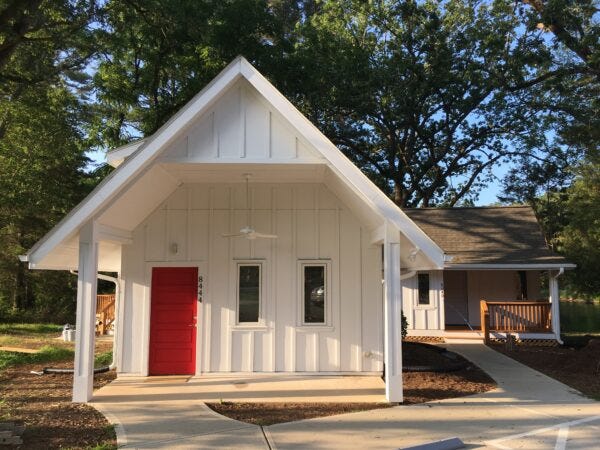For the first eleven years of their existence, the Episcopal Church of the Advocate in Chapel Hill, North Carolina, was a nomadic congregation. They moved around, worshipping in synagogues, other churches, and community centers before finally buying fifteen acres of land in 2014, placing a 100-year-old Carpenter Gothic chapel from a nearby town onto the land. It didn't take long before the small but mighty congregation became eager to do more with their space.
Their minister at the time, Reverend Lisa Fischbeck, was approached by four recent graduates of the nearby University of North Carolina who had worked with the local homeless population. Their proposition was a simple one, but it struck a chord.




